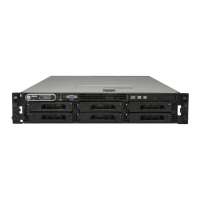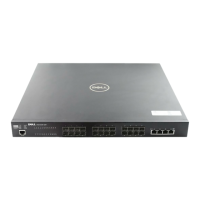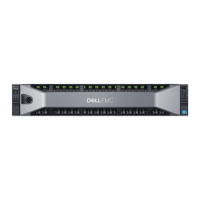Working Inside Your Computer 6-3
Figure 6-2. Removing the Front Bezel
R
eplacing the Front Bezel
Use the following procedure to replace the front bezel of
the computer:
1. Insert the five plastic alignment pins on the front
bezel into the alignment holes in the front of the
chassis (Figure 6-2).
2. When the six metal retaining clips make contact
with the retaining holes in the front of the chassis,
press firmly to snap the bezel into position.
U
npacking Your Hardware
Option
When you remove an option from its shipping carton,
you may find it wrapped in antistatic packing material
designed to protect it from electrostatic damage. Do not
remove the packing material until you are ready to install
the option.
I
nside Your Computer
In Figures 6-3 and 6-4, the computer cover is removed to
provide interior views. These illustrations also identify
features on the front and back of the computer. Refer to
them to locate interior features and components dis-
cussed later in this guide.
When you look inside your computer, note the direct cur-
rent (DC) power cables coming from the power supply.
These cables supply power to the system board, the exter-
nally accessible drives, and the internal hard-disk drives.
Expansion cards obtain power through the system board.
The flat ribbon cables are the interface cables for internal
drives. These interface cables are described in more
detail in Chapter 8, “Installing Drives in the External
Bays,” and Chapter 9, “Installing Drives in the Internal
Bays.”
The system board—the large, vertical printed circuit
board at the right side of the chassis—holds the com-
puter’s control circuitry and other electronic components.
Hardware options are installed directly onto the system
board in the Peripheral Component Interconnect (PCI) or
Extended Industry-Standard Architecture (EISA) expan-
sion-card connectors. The external drive bays provide
space for up to three half-height drives—typically a dis-
kette drive is installed in the top bay, a CD-ROM drive in
the middle bay, and the bottom bay is reserved for an
optional drive (often a tape drive for backing up data
from the hard-disk drives). The internal drive bays pro-
vide space for up to three 3.5-inch small computer system
interface (SCSI) hard-disk drives. Drives installed in the
internal drive bays can be up to 1.6 inches high.
During an installation procedure, you may be required to
change a jumper or switch setting on the system board, on
an expansion card, or on a drive. For more information, see
“Jumpers” in Appendix B.
alignment holes (5)
retaining clips (6)
retaining holes (6)
control panel
alignment pins (5)
CAUTION: See “Protecting Against Electrostatic
Discharge” in the safety instructions at the front
of this guide.

